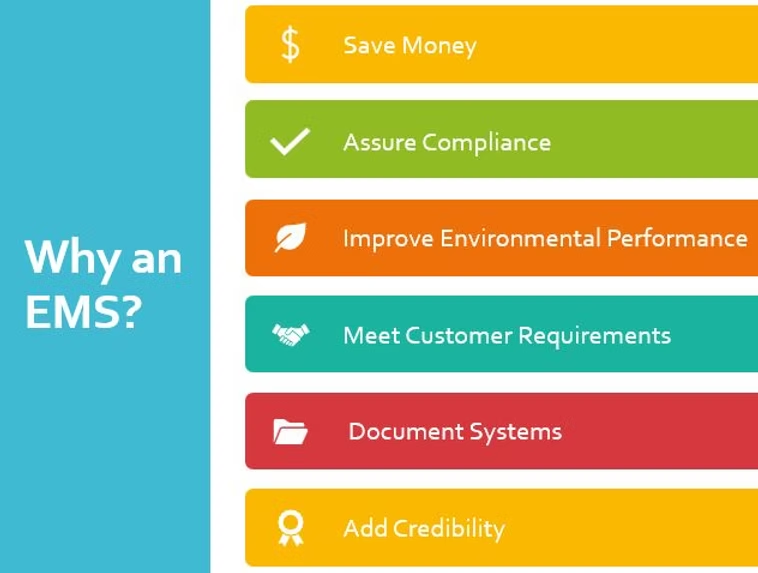Why Have an Environmental Management System?

Why go to the trouble of building and maintaining an Environmental Management System? Isn’t it just a lot of work and paper?
The short answer: because it will save you money in the long haul.
Yes, there is an initial investment of time, and time is money. But once the EMS is integrated into business operations, the savings are real. And under the revised ISO 14001 standard, there are limited but essential documentation requirements. If you can effectively manage an operational process without a written procedure, then none is required. Training and other controls can be as or more effective than a written document in some cases.
Companies that have an effective EMS are less likely to have issues with compliance, are more likely to reduce the costs of compliance, and enjoy the reputational benefits that come with having the ISO certification stamp of approval.
Save Money
All of the benefits listed here, individually and combined, can result in financial savings through:
Compliance assurance (fewer fines and penalties)
Improved environmental performance (reduced energy, water and disposal costs)
Meeting customer requirements (more opportunities for business expansion)
Knowledge transfer (fewer headaches with staff turnover)
Enhanced reputation (the goodwill that comes with the ISO 14001 certification)
Assure Compliance
Systematically identifying compliance obligations and recording them in a legal register is an important foundation for your EMS. Start with an applicability review of potentially relevant regulations and determine which apply, which do not and why. Then pull out the actionable requirements (inspections, training, submittals, plans, records requirements) and put systems in place to make sure they are implemented. Be sure and review the legal register on a regular basis and update it with any new information from regulators and other interested parties.
Need ISO Help? Check out our online store. Schedule a free consultation.
Improve Environmental Performance
Setting objectives to meet requirements to reduce the amount of waste disposed of in landfills, pollutants discharged to water bodies, emissions to the air and energy usage can help reduce the organization’s environmental footprint. These reductions often result in financial savings as well, whether directly through lower disposal or electricity costs, for example, or indirectly through the lower costs of compliance that come with reduced permitting and planning requirements.
Meet Customer Requirements
Many companies, such as automotive manufacturers and some energy companies, require that vendors have a certified ISO 14001 system in order to do business with them. They recognize that certified organizations are less likely to have environmental issues that reflect negatively on them and their customers.
Document Systems
When employees leave or transfer, there can be gaps in coverage that result in fines or penalties at worst, and confusion and loss of productivity at best. These gaps are eliminated through an effective and well documented EMS.
Add Reputational Credibility
A certain credibility accompanies the holder of an ISO certification. Because the company is held accountable not only to the requirements of the standard but also their own requirements, stakeholders can expect a higher level of diligence and performance from these companies.
Conclusion
Building your EMS doesn’t have to be a daunting effort. Use our EMS Template to get you started, and give us a call for a Free Consultation and help to get through stuck points. The phone will be answered by an ISO Auditor – not a salesperson!
It’s all in the details. Make sure you have a copy of the standard and are using it to build and check your system. That way, there won’t be any surprises at your next surveillance or re-certification audit.
Interested in more information on our comprehensive suite of environmental services? E-mail us to request a copy of our Statement of Qualifications.
About the Author
Joyce Kristiansson, M.S., is a Certified Environmental Professional Auditor and former registrar auditor for an ISO certification body. With more than 40 years of environmental experience, including fifteen years in ISO 14001 Environmental Management Systems, Joyce has experienced EMS systems and processes from all perspectives: developing, maintaining, sustaining and auditing (both internal and certification). Recognizing the improved environmental performance and positive financial results that can result from an effective EMS, Joyce wants to make the process as simple and inexpensive as possible so that small and medium-sized businesses can have the same competitive advantages as larger companies – without using a consultant.